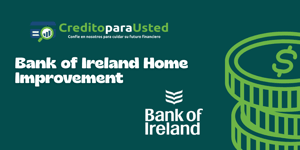In an era where financial transactions move at lightning speed, the threat of loan scams has never been greater. From synthetic identity fraud to high-pressure mortgage schemes, scammers prey on trust and inexperience, leaving victims with broken dreams and mounting debt.
Empowering yourself begins with understanding the scope of these threats, recognizing warning signs, and adopting concrete strategies to protect your finances. This article offers data-driven insights, inspiring narratives, and practical tips to help you stay one step ahead of fraudsters.
The Rising Tide of Loan Scams
Recent data paints a stark picture. In the first four months of 2025 alone, Americans reported over seventy-two thousand scams, resulting in losses exceeding $76 million. Globally, annual scam losses now top $15.35 billion, and auto lenders face a record $9.2 billion in fraud exposure.
Mortgage fraud remains a persistent threat, with applications for 2–4 unit homes showing a troubling 3.5% fraud rate. First-time buyers are nearly twice as likely to become victims. Meanwhile, Business Email Compromise and push payment scams evolve daily, targeting both consumers and corporations alike.
How Scammers Target You: Common Tactics
- Synthetic Identity Fraud: Criminals stitch together stolen or fabricated details to create a fake identity.
- First-party Fraud: Borrowers inflate income or use credit washing to misrepresent their financial health.
- Push Payment & BEC Scams: Fraudsters hijack emails or phone texts to redirect payments in real time.
- Pig Butchering Schemes: Victims are lured with promises of guaranteed returns, persuaded to send funds for “unlocking” higher profits.
Red Flags and Warning Signs
Vigilance starts with awareness. Here are the most common warning signs that signal potential fraud:
- Unsolicited loan offers arriving by email or phone
- Claims of guaranteed approval regardless of credit
- Requests for upfront fees or unusual payment methods
- High-pressure tactics demanding immediate decisions
- Offers that appear too good to be true, such as zero-interest or no-documentation loans
- Insistence on payment via gift cards, cryptocurrency, or wire transfers
Practical Strategies to Protect Yourself
Building a fortress around your financial life requires multiple layers of defense. Consider these proven strategies:
Verify Every Lender: Research the company name with terms like “scam” or “review,” check registrations with financial regulators, and read consumer feedback. Never trust an unsolicited offer without confirmation of legitimacy.
Compare Multiple Offers: Gathering three to five quotes from reputable institutions can reveal inconsistencies or predatory terms. Comparison empowers you to spot hidden costs and unfair rates.
Read Contract Terms Thoroughly: Fees, penalty clauses, and interest calculations often hide in fine print. Take your time, ask questions, and involve a trusted advisor if terms seem unclear.
Secure Your Devices: Enable multifactor authentication, update software regularly, and steer clear of clicking unknown links or attachments. Cyber hygiene is a crucial line of defense against credential theft.
Trust Your Instincts: If something feels off—rushed dealings, evasive answers, or unfamiliar payment requests—pause and verify before proceeding. A moment’s caution can save you thousands.
Case Example: A Mother’s Experience
When Sarah, a single mother of two, decided to refinance her home, she responded to an email promising instant approval. The rate was astonishingly low, and the lender insisted on a small upfront processing fee. Sarah wired the money and eagerly awaited her new loan documents.
Days passed with no follow-up. Phone calls went unanswered. Panicked, she researched the company only to discover numerous warnings on consumer forums. The email address she’d used was disabled, and her processing fee was gone forever.
Devastated but determined, Sarah reported the scam to authorities and shared her story online. Her experience underscores a vital lesson: verify before you trust. By comparing offers and reading fine print, she could have spotted the red flags earlier and preserved her hard-earned savings.
Embracing Vigilance in a Changing Landscape
Loan scams evolve as quickly as technology advances. Financial institutions invest heavily in AI-driven fraud detection, but consumer awareness remains paramount. Empowerment comes from knowledge: understanding the tactics, recognizing the warning signs, and adhering to proven protection strategies.
This vigilance isn’t just about preserving money—it’s about safeguarding dreams. Whether you’re a first-time homebuyer, a small-business owner, or someone seeking a modest personal loan, you deserve transparent, honest service. By arming yourself with information and patience, you transform from a potential victim into a confident, informed decision-maker.
Remember, every loan is a partnership between you and a legitimate lender. With the right mindset and practical safeguards, you can navigate the financial landscape with clarity, resilience, and peace of mind.
References
- https://explodingtopics.com/blog/number-of-scams
- https://www.backofficepro.com/blog/mortgage-fraud-statistics-2025/
- https://www.acfe.com/acfe-insights-blog/blog-detail?s=top-fraud-trends-2025
- https://www.jackhenry.com/fintalk/2025-fraud-trends-protecting-against-emerging-threats
- https://pointpredictive.com/press-releases/2025-auto-lending-fraud-trends-report-9-2-billion-industry-risk/
- https://www.signalfinancialfcu.org/2025/how-to-spot-and-avoid-loan-scams-online
- https://www.experian.com/blogs/ask-experian/the-latest-scams-you-need-to-aware-of/
- https://www.cbsnews.com/newyork/news/fraudulent-auto-loan-reports-to-federal-trade-commission-on-record-pace-in-2025/










